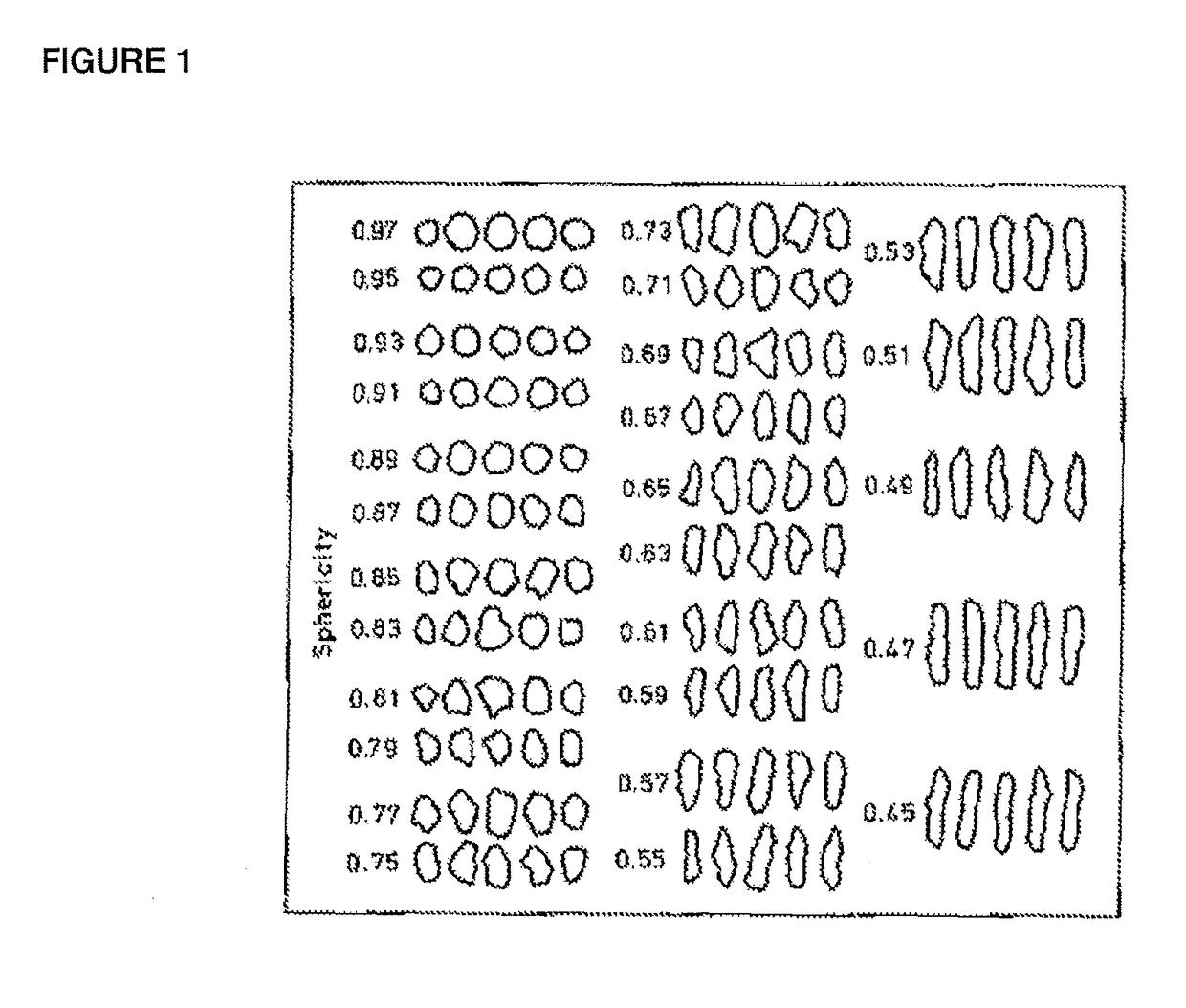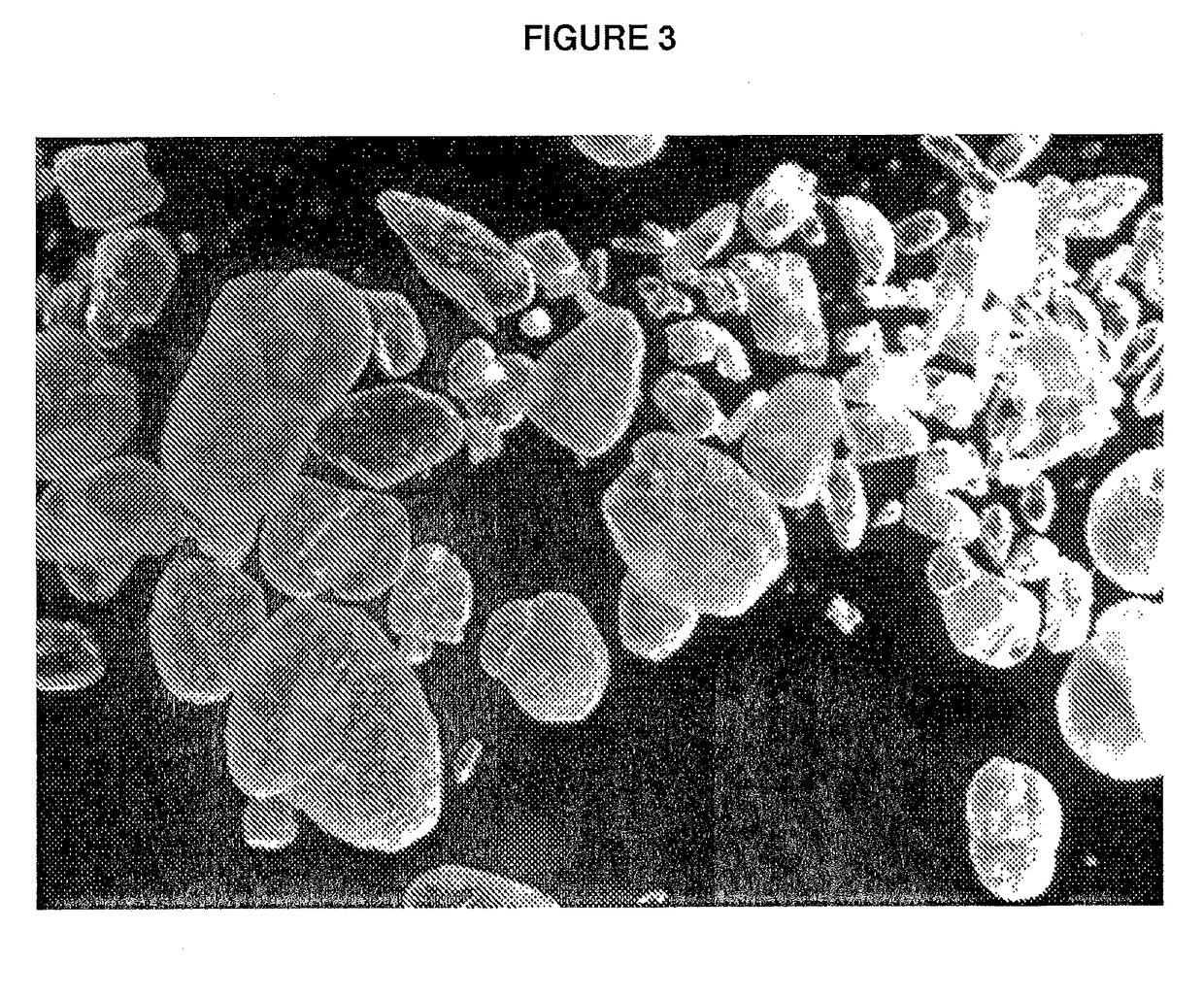Method for recovering succinic acid crystals using surfactants during crystallisation, and resulting crystals
- Summary
- Abstract
- Description
- Claims
- Application Information
AI Technical Summary
Benefits of technology
Problems solved by technology
Method used
Image
Examples
example 1
[0067]A fermentation medium is prepared under the strict conditions of example 1 of document WO 2011 / 064151. The only things that differ are the devices used: the pre-culture step is carried out on a Puntbus 6 I reactor, the growth phase on a 7 m3 fermenter and the production phase on two 70 m3 fermenters. The fermentation liquor flow rate is then approximately 1.5 m3 / h.
[0068]The separation of the biomass and the fermentation liquor is carried out by microfiltration. The latter is carried out batchwise at a temperature of 80° C., followed by a diafiltration step. The module is equipped with 2 “Kerasep” ceramic casings of 25 m2, having a porosity equal to 0.1 pm. The mean permeate flow rate is approximately 2 m3 / h with a transmembrane pressure of approximately 1 bar.
Acidification Step a)
[0069]The fermentation liquor is treated on weak cationic resin of Amberlite IRC 747 type at a flow rate of 2 BV / h at 60° C. in order to achieve a divalent ion concentration of less than 5...
example 2
[0084]A fermentation medium is prepared under the strict conditions of example 5 of document WO 2011 / 064151. The only things that differ are the devices used: the pre-culture step is carried out on a Puntbus 6 I reactor, the growth phase on a 7 m3 fermenter and the production phase on two 70 m3 fermenters.
[0085]The separation of the biomass and the fermentation liquor is carried out by microfiltration. The latter is carried out batchwise at a temperature of 80° C., followed by a diafiltration step. The module is equipped with 2 “Kerasep” ceramic casings of 25 m2, having a porosity equal to 0.1 pm. The mean permeate flow rate is approximately 2 m3 / h with a transmembrane pressure of approximately 1 bar.
Acidification Step a)
[0086]The fermentation liquor is then treated on a strong cationic resin of Purolite C150 type at a flow rate of 2 BV / h and at a temperature of 40° C. in order to achieve a pH of 2.0. The resins are regenerated after having passed over a volume of fermen...
example 3
[0088]This example corresponds to the performing of tests according to or outside the invention (with or without surfactant), in a double crystallization process.
[0089]Six tests were carried out, so as to evaluate the influence of 2 parameters: the value of the ratio of the volume of solution treated to the volume of carbon in step c) (“Bed Volume” or BV=Volume of solution / volume of activated carbon) and the % of crystallization mother liquors recycled at the level of step b).
[0090]Tests Nos. 1 to 3 are carried out according to the protocol given in example 1 and without surfactant.
[0091]Tests Nos. 4 to 6 are carried out according to the protocol given in example 2 and without surfactant.
[0092]Tests Nos. 7 and 8 are carried out according to the protocol given in example 1, with 1200 ppm of Erol 18 as surfactant.
[0093]Tests Nos. 9 to 11 are carried out according to the protocol given in example 2, with 1200 ppm of Erol 18 as surfactant.
[0094]The measurement of the index “b” is carrie...
PUM
| Property | Measurement | Unit |
|---|---|---|
| Temperature | aaaaa | aaaaa |
| Temperature | aaaaa | aaaaa |
| Temperature | aaaaa | aaaaa |
Abstract
Description
Claims
Application Information
 Login to view more
Login to view more - R&D Engineer
- R&D Manager
- IP Professional
- Industry Leading Data Capabilities
- Powerful AI technology
- Patent DNA Extraction
Browse by: Latest US Patents, China's latest patents, Technical Efficacy Thesaurus, Application Domain, Technology Topic.
© 2024 PatSnap. All rights reserved.Legal|Privacy policy|Modern Slavery Act Transparency Statement|Sitemap



